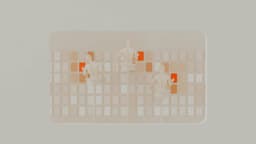DALL-E: Expanding the Boundaries of Artificial Intelligence
AI has advanced significantly, allowing machines to perform complex tasks and interact more like humans. One remarkable development is DALL-E, an AI model created by OpenAI. DALL-E generates realistic and creative images from text descriptions.
What is DALL-E?
DALL-E builds on OpenAI's GPT-3 language model, which uses the transformer architecture. While GPT-3 focuses on generating text, DALL-E merges text generation with image synthesis. It is trained on a large dataset of text and image pairs, learning to connect words with visual representations.
How Does DALL-E Work?
DALL-E can create unique and imaginative images based on text prompts. For instance, if given the input "an armchair in the shape of an avocado," DALL-E can produce a detailed image of that description. The model analyzes the text and generates each part of the image, using techniques for composition, color, and texture blending to create striking visuals.
Applications of DALL-E
DALL-E has numerous applications across various fields:
- Creative Arts: Artists and designers can use DALL-E to visualize concepts and experiment with new ideas.
- Advertising: Marketers can generate unique visuals for campaigns.
- Product Development: DALL-E can help in prototyping by generating realistic images of product designs.
Ethical Considerations
DALL-E also raises important ethical questions. It has the potential to create misleading images and deepfakes, which can be misused. OpenAI is aware of these issues and has put measures in place to reduce misuse. However, it is essential for users and policymakers to promote responsible use of such powerful AI technologies.
Additional Resources
DALL-E exemplifies a significant leap in AI, blending text and image creation. While it presents exciting opportunities, ethical implications demand careful consideration.












